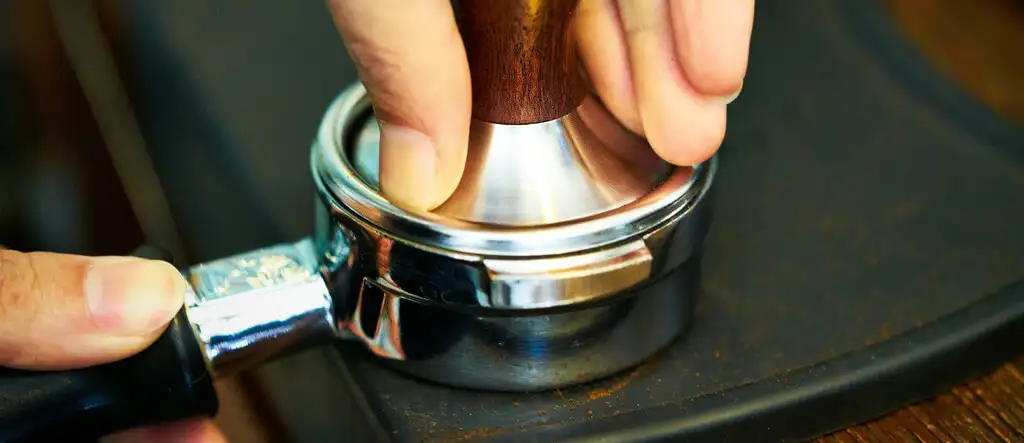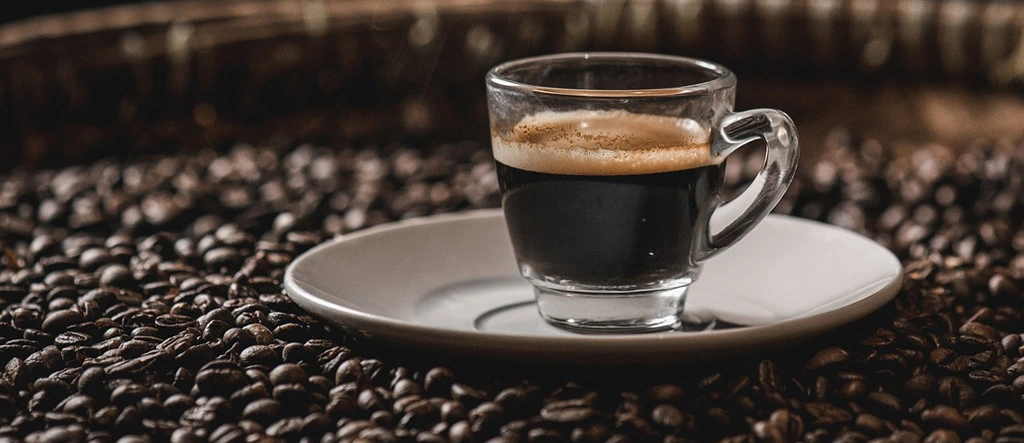Mastering the morning ritual of preparing your espresso can pose a challenge, especially when it comes to how to tamp espresso, a step that many coffee enthusiasts find tricky. Learning how to tamp espresso is essential for extracting the notes from your coffee beans, but getting it just right can be quite the task.
However, by following the technique, you can enhance the quality of your espresso from good to outstanding.
The goal of tamping is to establish the resistance that allows water to evenly saturate the coffee grounds, enhancing both flavor and aroma. This guide will walk you through each phase of the tamping process for espresso, starting with preparing your portafilter and ending with applying the amount of pressure.
With instructions and valuable advice, we aim to assist you in mastering this aspect of coffee brewing.
Key Points
- When preparing espresso it’s important to press the coffee grounds into the portafilter, a step known as tamping. This process requires about 30 pounds of pressure to bring out the flavor. You’ll need quality beans, a grinder like the La Marzocco Swift, and a fitting tamper for this task.
- The proper tamping technique involves filling the portafilter with grounds, applying pressure to create a puck, and then smoothing it out for a consistent surface. To ensure espresso every time it’s crucial to avoid mistakes like uneven tamping or using too much or too little pressure.
- Consistent tamping does not improve the taste. It also ensures that each shot of espresso has a uniform flavor profile and helps maintain your brewing equipment in good condition.
Understanding Espresso Tamping
Understanding how to tamp espresso is crucial for perfecting the process of brewing coffee. This step controls the flow of water through the coffee grounds, which directly impacts the flavor and quality of your espresso shot.
So, what exactly is tamping? Tamping is a step in preparing espresso in which the coffee grounds are evenly compressed into the portafilter using a tamp. This technique ensures that the hot water flows through the grounds uniformly, enhancing coffee extraction and infusing each espresso shot with flavor.
The pressure applied during tamping, between 2 and 3 lbs, significantly influences the outcome. Studies have shown that compressing the puck of coffee beyond this pressure range doesn’t bring about any advantages.
Coffee enthusiasts emphasize that tamping affects the layers of coffee more than the ones. This uneven compression indicates a relationship where firm tamping doesn’t necessarily result in better espresso. It eventually reaches a point where further compression doesn’t enhance flavor intensity or consistency.
Maintaining pressure while tamping is essential, for baristas aiming to enhance the taste and aroma of their espresso shots.
The art of tamping balances precision with strength – it’s where science meets craft in coffee preparation.
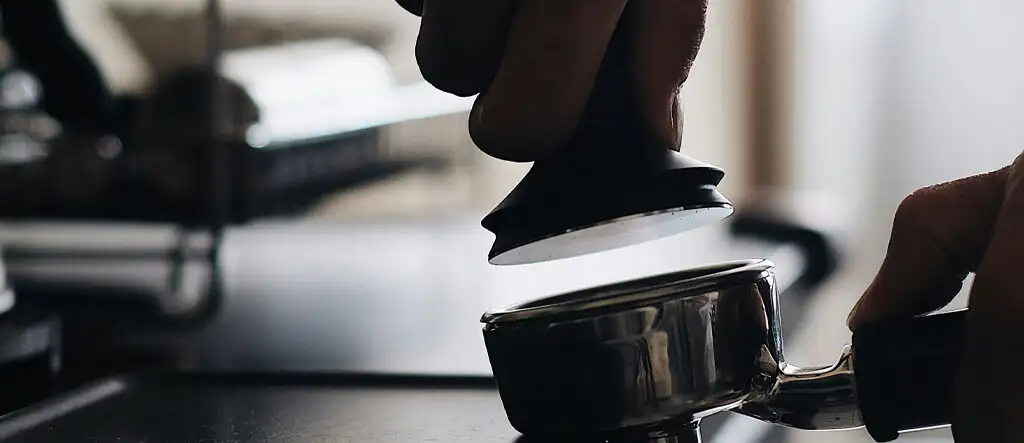
Tools needed for tamping
Understanding how to tamp is crucial when aiming to make high-quality espresso. The journey towards creating the espresso shot starts with using premium beans stored in a sealed container to preserve their freshness. This step helps maintain the coffee’s oils and aromas until it’s time to brew.
Accurate grinding of these preserved beans is key. Using a speed grinder like the La Marzocco Swift can simplify this process. The Swift grinder does not grind the beans but applies about 8 pounds of pressure when tamping them, ensuring a level of consistency that is hard to achieve manually.
Another factor is choosing the tamper. Tamper pistons come in three variations: Euro curve, US or Australian curve, and flat designs. Each type impacts how uniformly the coffee grounds are compressed in the portafilter, influencing water flow and extraction quality during brewing.
Deciding between a Euro curve tamper, a US curve tamper, or a flat design depends on your preference and brewing method. This choice will help you consistently create shots, with precision and skill.
Step-by-step Guide to Tamping Espresso
Mastering the art of tamping espresso can truly elevate the coffee drinking experience, for any lover of coffee. This straightforward, easy-to-follow guide will ensure that your espresso shots always deliver a burst of richness and depth.
Preparing the portafilter
To make an espresso shot start by distributing the coffee grounds in the portafilter. This ensures that the water flows smoothly through the coffee during extraction, which is essential for achieving flavor.
After that, use a surface to level out the grounds in the portafilter. This creates a base, which is important for making a fantastic espresso shot.
Leveling the grounds
To properly tamp espresso, it’s crucial to level out your coffee grounds on a surface. This step helps ensure that the grounds are evenly distributed, leading to an extraction of coffee flavors.
Maintaining consistency when leveling the grounds also improves the dosing process resulting in higher quality espresso. It helps prevent issues, like channeling or uneven extraction ensuring each sip of your espresso tastes consistently delicious.
For results always tamp on a surface.
Next, gather your tools: a coffee tamper and a filled portafilter. The tamper should fit snugly into the portafilter so you can apply pressure across the coffee surface.
Tamping compacts the grounds into a puck. A uniform puck surface allows water to flow through evenly, extracting the flavors from your coffee without any weak spots or channels.
Applying the tamp
After loading the portafilter with ground coffee the next step is to tamp it down. Apply a pressure of, around 15 pounds to shape the coffee into a puck.
This step is crucial for ensuring that your coffee is evenly compressed and flat allowing water to flow through it uniformly during extraction.
To enhance the solidity of the puck and create a surface, increase your pressure to 20 to 30 pounds while giving it a twist. This twisting action helps smooth out any unevenness and ensures the compression of the coffee.
By tamping, you can ensure that each espresso shot you make has a flavor and aroma, thanks to the even distribution of water through the tightly packed coffee grounds.
Applying proper pressure during tamping can dramatically improve your espresso’s taste.
Polishing the puck
Making sure the espresso grounds are nicely polished is a step in preparing espresso that should never be underestimated. This process involves giving the tamper a twist after it has been pressed down, ensuring a surface on the coffee grounds.
This technique improves espresso extraction by promoting a flow of water through the coffee grounds during brewing.
The action of rotating the tamper to create a surface on the coffee grounds impacts the taste and quality of your espresso. Failing to polish could lead to a surface that could potentially affect the flavor and aroma of your espresso.
Attention to detail is key to mastering any barista skill. Properly polishing the coffee puck demonstrates this principle in action.
Essential Tips for Tamping Pressure
To brew a flawless espresso, it’s crucial to grasp how the size of your coffee grind and the pressure you use while tamping are interconnected. Adjusting your tamping pressure according to the grind size can guarantee extraction and a well-rounded coffee experience.
Grind size and tamping pressure correlation
To brew an espresso cup, it’s important to adjust your tamping pressure according to the grind size of your coffee. Finely ground coffee requires pressure, while a coarser grind needs force during the extraction process.
This relationship plays a role, in controlling how quickly water flows through the coffee grounds.
Achieving this balance can be tricky. It significantly affects the taste of your espresso. Using pressure on a coarse grind can result in water passing through too fast leading to weak flavors in the brew.
Applying force to finely ground coffee can extend extraction time and cause bitterness from over-extraction. Therefore, mastering the art of tamping with precision and consistency is key to crafting that espresso shot!
How to determine the right tamping pressure
When trying to determine the amount of tamping pressure for your espresso, it’s a good idea to start testing within the recommended range of 20 to 30 pounds. It’s important to maintain consistency in how pressure is applied and ensure distribution.
Adjust the force you use little by little until you find the balance that suits your extraction process. Remember, at 15 pounds of pressure is needed to shape the coffee grounds into a disc or puck.
By refining your tamping and controlling your flow rate, you can increase your chances of achieving a balanced extraction. This leads to an espresso experience that will make each brewing session enjoyable.
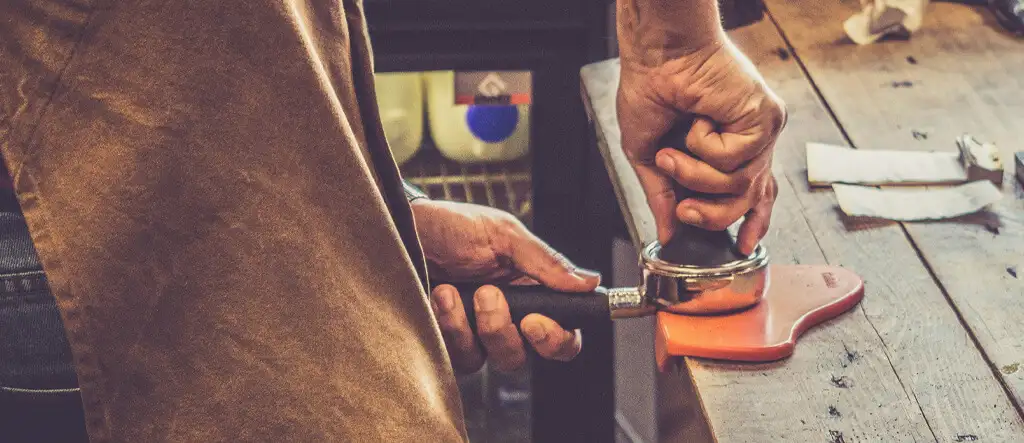
Common Tamping Mistakes and How to Avoid Them
Making the ideal espresso can be challenging for beginners. Mistakes, like tamping pressure or misjudging the required force, can lead to less-than-ideal espresso shots.
To achieve a brew it’s crucial to apply even tamping pressure and thoroughly polish your puck post tamp. Following these guidelines helps steer off pitfalls and guarantees top-notch espresso results every time.
Uneven tamping
When it comes to making espresso a crucial mistake is not tamping the coffee evenly. This can result in water flow through the grounds, causing some areas to be under-extracted while others are over-extracted. As a result, the espresso may taste off balance. Lack the full range of flavors that properly tamped coffee can offer.
Whether you’re a barista or just someone who enjoys making coffee at home mastering the skill of applying pressure when tamping is key. Creating a level surface of coffee grounds ensures that water is distributed evenly allowing for optimal flavor extraction.
By practicing and perfecting this technique, you can elevate your coffee-making skills and enhance the quality of your espresso.
Tamp evenly to avoid a slanted coffee bed for balanced flavor in every shot.
Applying too much or too little pressure
Applying pressure while tamping your coffee can result in over-extraction, leading to a taste. This happens when the coffee grounds are compacted tightly hindering water flow. On the other hand, insufficient pressure can cause under-extraction, resulting in an espresso because loosely packed grounds allow water to pass through too quickly, missing out on flavor.
To achieve balanced flavor extraction, it’s important to apply the right amount of pressure—typically around 30 pounds for baristas. Perfecting this tamping technique takes practice, but it is key to crafting that ideal shot every time.
Not polishing the puck
Once you’ve mastered the art of applying the pressure while tamping it’s essential not to overlook the step of polishing the coffee puck. This final flourish involves a twisting motion as you lift the tamper from the ground.
Polishing ensures a surface on the puck vital, for water distribution during extraction. Skipping this can result in extraction impacting both the aroma and flavor of your espresso.
Proper polishing technique elevates shot quality. Creates a brewing environment. A polished surface allows water to flow evenly through the espresso puck leading to an extracted cup, with balanced flavors and aromas. It underscores why rushing or skipping this part of preparation is not advisable.
Other mistakes in tamping
Here are some common mistakes to avoid when preparing espresso;
- Incorrect tamping technique; Using the movement or inconsistent pressure can cause extraction.
- Using coffee grounds that are too coarse: If the grounds are too extensive, they won’t compact properly, resulting in a watery espresso.
- Not evenly distributing the coffee before tamping; Failing to spread out the grounds can lead to extraction and channeling.
- Disturbing the coffee bed’s density: Moving or shaking the tamper after compressing can disrupt the evenness of the puck, affecting the shot’s quality.
- Tamping in mid-air: It’s essential to tamp on a surface like a countertop for pressure application.
- Tamping at an angle: Pressing down at an angle can impact water flow through the grounds, causing flavors.
- Using a rubber tamping mat; Placing a rubber mat under your portafilter can protect surfaces. Prevent slipping while tamping.
- Applying pressure: Much force can overly compact the coffee, slowing down extraction and resulting in extracted flavors.
- Not applying pressure: Insufficient pressure can lead to extracted espresso with sour tastes and a thin body.
- Overfilling the filter basket may cause issues with…When you add an amount of coffee to your portafilter, it becomes challenging to compress it consistently, thus impacting the extraction process.
Recommended tamping tools
To master the skill of tamping for espresso, it’s essential to have the tools on hand. Here are some recommended items that can take your espresso-making to the next level by ensuring an extraction and a more flavorful outcome;
- A high-quality espresso machine: A sturdy espresso machine with a reliable portafilter is crucial for providing a stable foundation for the tamping procedure.
- Filter basket: Choose a filter basket that fits your size and allows space for the proper amount of coffee grounds.
- Coffee grounds: Using freshly ground coffee is vital to achieving the results. Investing in a quality burr grinder ensures a grind size.
- Tamper: A tamper plays a role in espresso preparation by evenly distributing coffee grounds in the filter basket. Look for a tamper that feels comfortable to use and has a base, for compression.
- Scale: Incorporating a scale into your routine helps accurately measure coffee grounds and maintain tamping pressure.
- Tamping mat: A nonslip tamping mat provides stability during tamping. It helps prevent spills or slipping accidents.
How to know if you are tamping correctly
To achieve a tamping process, it’s important to remember key factors. Firstly, pay attention to how the espresso shots are extracted. A balanced flavor and steady water flow through the coffee grounds indicate that tamping was done skillfully.
Additionally, inspect the puck after tamping. A tamped puck should have a surface without any noticeable dents or gaps. To improve consistency in tamping and prevent channeling, consider using a distribution tool.
By following these recommendations you can guarantee outcomes. Enjoy a perfect espresso every time.
Benefits of Proper Tamping
Mastering the art of tamping is crucial, for unleashing the essence of your espresso. Each sip will boast a taste and velvety crema that you’ll enjoy exploring further.
Enhanced flavor and aroma
Getting the taste and aroma, in your espresso shot relies heavily on how you tamp the coffee grounds. This step ensures that the water flows evenly through the grounds extracting all the flavors and strong aromas without any unevenness.
The result is a brewed drink that delights your senses with its improved flavor and fragrance.
Proper tamping also plays a role in extracting coffee which is essential for bringing out the best flavors in the beans. Each sip offers a brewing quality elevating every espresso shot from good to exceptional.
Applying the amount of pressure on the coffee grounds lets coffee enthusiasts savor an espresso with heightened flavors and delightful scents. This sets the stage, for coffee beverages every single time.
Consistency in shots
Consistency, in the preparation of espresso is key to ensuring that each cup delivers the flavor and aroma. This uniformity hinges on the compaction of coffee grounds.
When done manually tamping can sometimes result in compaction leading to shots. Thanks to innovations like the La Marzocco Swift grinder baristas can now achieve compaction with every pull.
This technological upgrade ensures that all espresso shots maintain a strength and taste profile.
Mastery of tamping techniques is also crucial for upholding shot consistency. It regulates the flow of water through the coffee puck during extraction, which is vital for producing top-notch shots.
By delving into tamping theories and applying them effectively – those concerning pressure and distribution – baristas can ensure that all their espresso creations are characterized by even distribution and a proper extraction process.
Maximizing equipment performance
When we focus on tamping our shots it’s important to understand how this technique can enhance the performance of our espresso machines. Tamped coffee not delivers a delightful cup but also plays a significant role, in preserving the longevity and efficiency of your machine.
Tools like the Swift grinder, which tamps coffee uniformly during grinding help create an effective seal and even distribution of coffee grounds. This seamless coordination between grinding and tamping reduces the likelihood of errors resulting in stress on the espresso machine during extraction.
Adopting methods such as the Staub tamp, which targets all four corners for a seal, can further optimize equipment performance. By ensuring pressure and distribution across the coffee puck, we prevent any particular section of the espresso machine from being overworked compared to others.
These practices help prolong its lifespan and uphold quality in every shot prepared. Proper tamping serves as a shield against extraction pressures, safeguarding both the machinery and ensuring top-notch coffee quality over extended periods.
Wrapping Up
Brewing espresso correctly by tamping it well brings out a range of flavors and scents in your coffee. Getting this technique down pat guarantees that every cup of espresso is flavorful and enjoyable. With some practice, anyone can master the art of tamping, resulting in shots and an enhanced coffee-making experience.
Improving your tamping technique elevates the flavor profile and optimizes the performance of your equipment. So pick up your tamper, follow these instructions, and experience firsthand how proper tamping transforms each espresso shot you prepare.
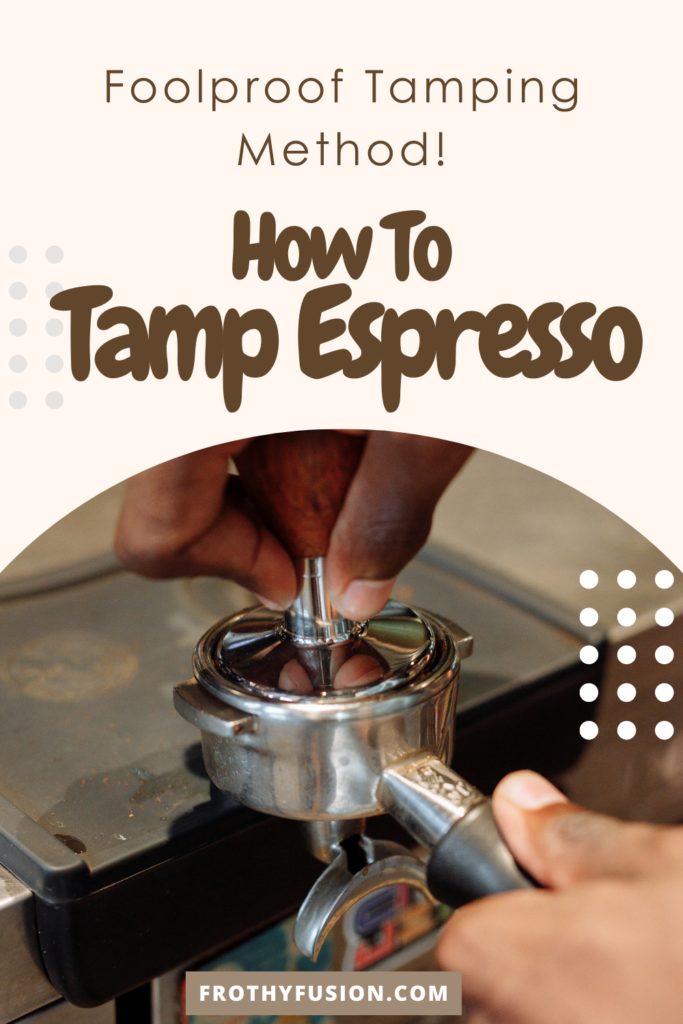
FAQs


